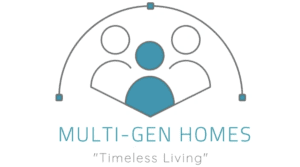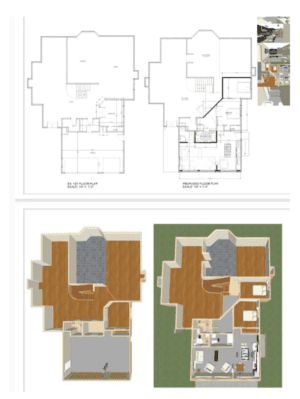The Benefits of Living in Multigenerational Homes
 Submitted by Danniel Fuchs
Submitted by Danniel Fuchs
Multi-Gen Homes
Why Taking Care of a loved one living with Alzheimer’s in a Multigenerational Home is the Best Way
The paradigm of the nuclear family, once considered the symbol of the American Dream, is undergoing a significant transformation. Over recent years, the US real estate market has seen a resurgence in multigenerational households.
According to the Pew Research Center, the number of Americans living in multigenerational family households has reached historic highs. The core reasons are economic factors, the need for childcare, and the ever-present desire to care for elderly parents, especially those diagnosed with conditions like Alzheimer’s.
Alzheimer’s Affects All
Alzheimer’s disease doesn’t only affect the patient but ripples through the entire family unit. As such, multigenerational home plans have evolved to address the unique needs and challenges presented by different generations of adults living under one roof.
Homes designed with this multi-gen floor plan not only provide separate living space but also common spaces like the great room and family room, where multiple generations can spend quality time. This setup allows for a balance between personal space and shared moments, essential for mental health and fostering stronger family bonds.
Favorable Financials Follow
The financial benefits of multigenerational living cannot be ignored either. According to Generations United, pooling resources together can lift family members above the poverty level. Economic Supplement of the Census Bureau also indicates that a significant number of people are now moving into multigenerational households for financial reasons.
The cost savings extend beyond just shared rent or mortgage. Splitting utility bills, consolidating childcare, and sharing responsibilities like neighborhood shopping centers can lead to substantial savings.
Multigenerational Housing Benefits Multiple Generations

But beyond practical and economic reasons, multigenerational home plans offer an intangible benefit: different perspectives. The interplay between young adults, working-age adults, and older generations in a single-family home ensures that wisdom, experience, and youthful exuberance coexist.
This mosaic of ages and experiences ensures that every member, from the oldest to the youngest, feels valued.
Moreover, when dealing with Alzheimer’s, the involvement of extended family in caregiving can be a benefit. Younger members can lend a hand, taking the elderly for walks or simply spending time in the sitting room, sharing family heirlooms and stories.
This intergenerational interaction can play a pivotal role in improving the mental health of Alzheimer patients especially on the first stages.
Loving Way to Care
Lastly, caring for your loved ones at home is a profound act of love and gratitude. It is a testament to the legacy of compassion we wish to leave for our children. In this act, we honor our parents’ unwavering dedication and love for us.
While the journey may be challenging, it remains one of the most soulful and significant gestures of love you can offer your family. Embrace this journey with an open heart, knowing the depth of its impact on generations to come.
Let’s not forget the pandemic restrictions further underscored the benefits of multigenerational living arrangements. As many older adults felt isolated in their later years, having family close became a source of solace, who knows if this will ever happen again.
The Practical Basics
Now a few words about the actual multi-generational plan. One of the highest scoring topics when discussing multigenerational housing is the mother-in-law suite or the primary suite. Typically located on the first floor, these suites often come equipped with optional features like a walk-in shower, which caters to the special needs of older family members.
They might also boast a separate entrance, granting older adults independence while ensuring they are never too far from family aid.
Well-known builders like D.R. Horton offer multigenerational homes that are ready to move in, but if you are happy in your own home, companies like multi-Gen Homes excel in transforming existing structures into multi-generational residences. They skillfully navigate budget limitations and the original house layout, sometimes constructing additional dwelling units.
In other instances, they enhance spaces with special insulation and incorporate extra bathrooms and kitchens, all aligned with aging-in-place best practices.
With firsthand experience in caring for Alzheimer’s-afflicted family members, their team offers a compassionate and expert approach throughout the process, including free family coaching and referring to all aging at home services and technology.
The New Normal
The rise in multigenerational housing is not merely a trend borne out of economic necessity or changing demographics among ethnic groups. It’s a testament to the human spirit’s adaptability and our innate desire to care for our loved ones, especially those with special needs.
As we continue to adapt and evolve, the multigenerational home is poised to become a symbol of unity, resilience, and love.
I urge everyone to embrace this transformative way of living and to reconsider long-held beliefs that might benefit from a fresh perspective.
Let’s inspire change together!
 Submitted by Danniel Fuchs
Submitted by Danniel Fuchs
Multi-Gen Homes

